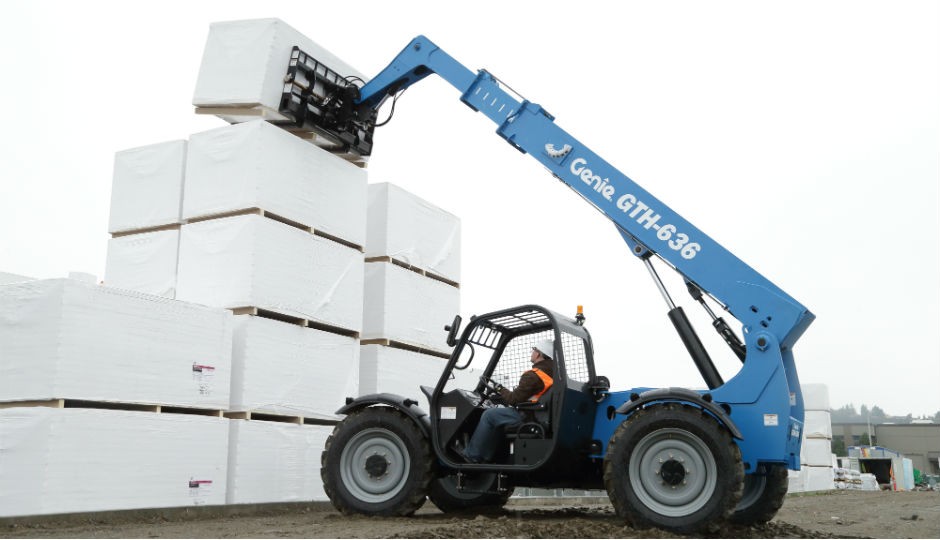10 tips for safely operating telehandlers on the jobsite

A telehandler is one of the most frequently used and most versatile pieces of equipment on a jobsite. This machine’s true value is in its multi-purpose capabilities – whether you need to lift, move and/or place materials, it is an ideal choice because it provides all-around utility to answer more than one jobsite need.
As you figure out how to do more and more on your jobsites with a telehandler, you should follow these simple, safe operating tips to help reduce the risk of incidents and also to keep the machine performing productively day in and day out, from one application to another:
1. Specific telehandler training
It is important to be properly trained, with both general training and hands-on practical training, on the telehandler you will be using. This includes thoroughly reading the operator’s manual and safety signs on the machine, as well as understanding the function and location of all safety devices and controls before beginning operation.
2. Rules and regulations
Read, understand and obey your employer’s safety rules and jobsite regulations, as well as all applicable local, governmental or provincial regulations that apply to telehandler operation before operating the machine.
3. Inspection and tests
Perform a pre-operation inspection and function tests on the telehandler before each shift. If there is anything apparently wrong with the machine or a malfunction is discovered, make sure the machine is immediately tagged and removed from service until it can be repaired by a qualified service technician.
4. Workplace hazard assessment
Perform a workplace hazard assessment prior to moving the telehandler to the jobsite. Be aware of and avoid hazards such as drop-offs and holes, slopes, slippery or unstable surfaces, overhead obstacles, power lines and any other hazards that may exist and develop a plan to avoid those hazards through all phases of machine operation.
5. Load capacity chart
Do not operate a telehandler without the proper load capacity chart. It is critical that the load chart in the telehandler matches the machine and the attachment you are using before lifting the load. Load charts should always be clearly legible and visible to you while you are set up in the normal operating position.
6. Know your load
Make sure that the weight and centre of gravity of the load does not exceed the telehandler’s or attachment’s maximum capacity according to the load chart. Evaluate the dimensions of the load to determine proper load handling techniques. Always secure the load to minimize the potential for falling debris.
7. Personnel and suspended loads
Remember that there are additional restrictions placed on the operator, owner and user of the equipment when using a telehandler to lift personnel and suspended loads. Always refer to the ANSI/ITSDF B56.6 standard, OSHA Regulations, and the telehandler and attachment manufacturer’s instructions regarding the additional requirements and operating instructions for these applications.
8. In the cab
Always wear your seatbelt while operating the telehandler. Adjust the seat and steering wheel so that you can easily reach all of the machine controls. Adjust side and cab mirrors to maximize visibility
9. Stability triangle
Ensure that the combined centre of gravity of the telehandler and the load always remains within the stability triangle. Good operating habits that can help are:
10. Tipping safety
Do not jump from the machine if your telehandler tips over. Remain in the cab, stay in the seat with your seat belt fastened and brace for impact by grasping the steering wheel and leaning away from the point of impact.
Keep these tips in mind, and you will be able to prevent incidents from happening while operating a telehandler on any jobsite.

